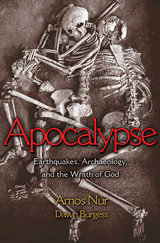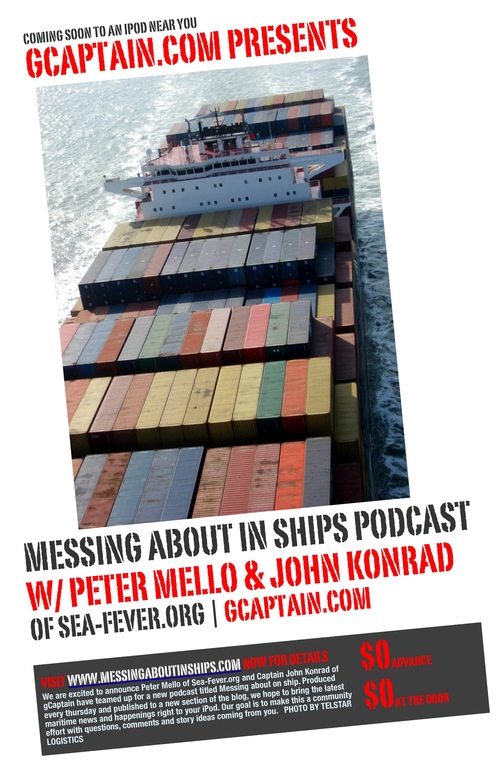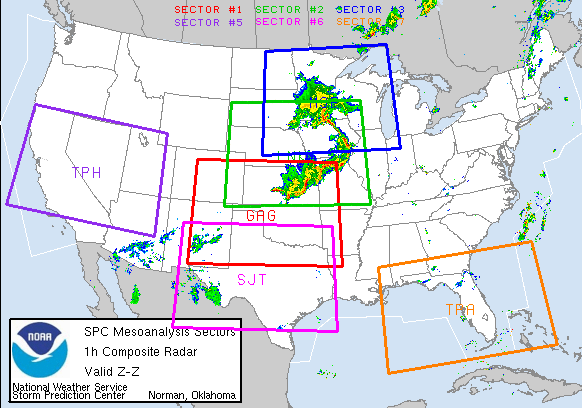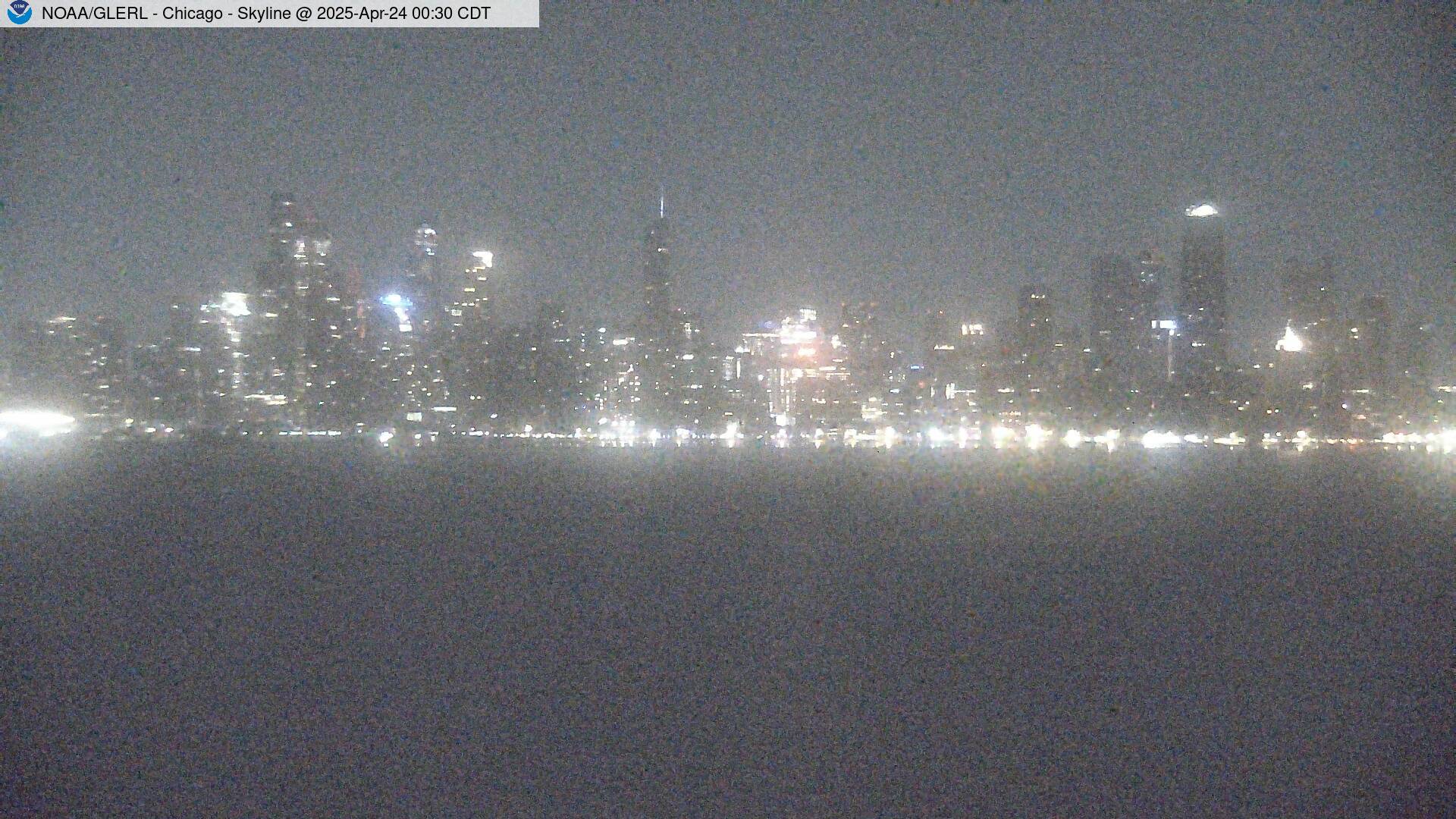 Apocalypse: Earthquakes, Archaeology, and the Wrath of God
Apocalypse: Earthquakes, Archaeology, and the Wrath of GodBy Amos Nur With Dawn Burgess
What if Troy was not destroyed in the epic battle immortalized by Homer? What if many legendary cities of the ancient world did not meet their ends through war and conquest as archaeologists and historians believe, but in fact were laid waste by a force of nature so catastrophic that religions and legends describe it as the wrath of god?
Apocalypse brings the latest scientific evidence to bear on biblical accounts, mythology, and the archaeological record to explore how ancient and modern earthquakes have shaped history--and, for some civilizations, seemingly heralded the end of the world.
Archaeologists are trained to seek human causes behind the ruins they study. Because of this, the subtle clues that indicate earthquake damage are often overlooked or even ignored. Amos Nur bridges the gap that for too long has separated archaeology and seismology. He examines tantalizing evidence of earthquakes at some of the world's most famous archaeological sites in the Mediterranean and elsewhere, including Troy, Jericho, Knossos, Mycenae, Armageddon, Teotihuacán, and Petra. He reveals what the Bible, the Iliad, and other writings can tell us about the seismic calamities that may have rocked the ancient world. He even explores how earthquakes may have helped preserve the Dead Sea Scrolls. As Nur shows, recognizing earthquake damage in the shifted foundations and toppled arches of historic ruins is vital today because the scientific record of world earthquake risks is still incomplete. Apocalypse explains where and why ancient earthquakes struck--and could strike again.
Amos Nur is the Wayne Loel Professor of Earth Sciences and professor of geophysics at Stanford University. Dawn Burgess is a writer and editor based in Bar Harbor, Maine. She earned a PhD in geophysics from Stanford.
"[Amos Nur] posits seismicity--rather than invaders or social forces--as the prime dynamic behind the fall of ancient civilizations. Nur engages in what we might call archaeological detective work--looking at the positions of human remains, for instance, to determine cause of death--his book is focused and intense."--David Ulin, Los Angeles Times Book Review
"[A] deeply researched and compellingly written book. Apocalypse is a winning combination of cautious interdisciplinary investigation and interpretation, writing suitable for a general readership, and excellent illustrations. Although it will deliberately irritate many archaeologists, it should also provoke a serious reconsideration of the archaeological record. [T]he evidence for earthquakes in prehistorical change may be staring archaeologists in the face."--Andrew Robinson, Nature
"The theory that earthquakes may have caused the destruction of many ancient cities is unpopular and controversial. Amos Nur's book illustrated these ideas with convincing prose and meticulous research. Nur introduces the reader to a relatively new science...called Archaeoseismology. The reader will dosciver that the earthquakes that have occurred in the more recent times...have parallels to the remnants of destruction left from earthquakes in the distant past. Apocalypse is a result of [Nur's] determined effort to expell the fallacies in archaeology with the hard science of geophysics."--Lee Gooden, ForeWord Magazine
"In Apocalypse...Amos Nur compellingly proposes seismic sources for civilizational collapses that the Bible and the Classics attribute to other causes."--Anneli Rufus, East Bay Express
WEATHER NOTE
Flooding in Interior Alaska declared a major disaster
FAIRBANKS -- Federal disaster aid has been granted to Alaska to supplement state and local recovery efforts in the areas struck by severe storms, flooding, landslides and mudslides between July 27 and Aug. 6, according a news release from the Federal Emergency Management Agency.
FEMA Administrator David Paulison said federal funding is available for emergency work and the repair or replacement of facilities damaged in the Denali Borough, Fairbanks North Star Borough, North Slope Borough and the Yukon-Koyukuk Regional Educational Attendance Area.
Douglas G. Mayne is the federal coordinating officer for operations in the affected area.
12th Annual High Plains Conference
Presentations from the conference are now available for online viewing (PDF and PPT formats).
MARITIME NOTE
Mysterious Disappearances On Cruise Ships
HungZai.com
October 6, 2008
The cruise industry says that more than 30 passengers have disappeared from ships in the past five years - and these figures exclude those known to have been suicides or drunken accidents.
When the QE2 docked at Southampton on January 2, the liner was one passenger short: a 62-year-old German woman was missing. She is just one of a growing list of people who have disappeared from cruise ships in mysterious circumstances. Some of these deaths may be suicides, writes Gwyn Topham, but others appear more sinister. And of course there are no police out on the ocean . . .
In the last days of the Vietnam war, Hue Pham and his wife Hue Tran spent two perilous weeks on a cramped container ship, adrift with no food and little water in the South China Sea. The couple survived this desperate flight from Vietnam, built a new life in America, and then, three decades later, decided to take a Caribbean cruise on a ship called the Carnival Destiny. This was the boat journey that they would not survive.
The facts of the couple's disappearance, as the Destiny sailed between Barbados and Aruba on May 12 2005, are few. After a fruitless on-board search, the ship eventually retraced its path, joined by the US coastguard. No trace of their bodies was ever found.
For the relatives, the deaths left a terrible, insoluble puzzle. Their son, Son Michael Pham, maintained that his parents had no reason to take their own lives and were in fact planning a trip back to Vietnam, and were looking forward to meeting relatives again. "Two American citizens with no personal or financial problems, no serious health problems, living the happiest time of their lives, both vanished without a trace or witness," he later told an inquiry.
The cruise had been a Mother's Day gift to the couple, and they were on board ship with their daughter and granddaughter. "I immediately flew down to California, went through their home, and tried to find one clue, something unusual. I could not," Son Michael says now.
Since then, with the help of two other bereaved families, Son Michael has helped establish a group called the International Cruise Victims. In the past weeks, he has been offering his help to yet another family, after the QE2 sailed into Southampton on January 2 this year one passenger short.
Officially, Hampshire police are still investigating how a 62-year-old German woman, so far identified only as Sabine L, disappeared from a new-year cruise aboard the QE2 somewhere off Madeira. Her family has launched its own website appealing for help (www.qe2missing.de). But the full truth of Sabine L's last moments on the luxury Cunard liner is unlikely ever to be firmly established - beyond the cold fact that she joins more than 30 passengers who, in the past four years, have mysteriously disappeared from cruise ships worldwide.
Last year the cruise industry reported that 24 passengers had disappeared between 2003 and last March. The information emerged after a US Congressional subcommittee found itself with an unlikely task: to examine the threat posed to citizens by booking a cruise holiday. Since then, at least 10 more passengers and two crew have been reported missing or overboard, including one Scottish pensioner lost in the Atlantic last November. These figures do not include known suicides and those who, for one or reason or another - a drunken argument, perhaps, or misplaced bravado - are known to have deliberately jumped. Of those who have gone mysteriously missing, some may have killed themselves; other incidents may be alcohol-related mishaps; but in at least one case, the death of a 52-year-old woman on the Island Escape in Italy, something more sinister may have gone on. The FBI is still investigating that case.
After hearing details of those who had gone missing on board ships, subcommittee chairman, Christopher Shays, a Republican congressman, warned of a "growing manifest of unexplained disappearances, unsolved crimes and brazen acts of lawlessness on the high seas". Like small cities, he said, cruise ships experienced crimes. "But city dwellers know the risks of urban life - and no one falls off a city never to be heard of again." Going on a cruise was, he said, perhaps "the perfect way to commit the perfect crime".
There was no evidence of foul play in the disappearance of "M", a 40-year-old woman, from Celebrity Cruise Line's Mercury. But then, there was precious little evidence at all - and what did emerge was largely due to the persistence of her father, Kendall Carver, a former company CEO, who spent tens of thousands of dollars on legal fees and private investigators in an attempt to discover the truth about her disappearance. (Carver has asked the Guardian not to use his daughter's name, to protect the privacy of other family members.) Carver says it was on the second day of the Mercury's cruise to Alaska in August 2004 that a cabin steward realised that M's room had not been slept in and reported her absence to his boss, who told him he would deal with it. Throughout the cruise, the steward continued to place chocolates on the pillow of the unused bed, as he was ordered to do, but no one saw M again. At the end of the cruise, when the ship docked in Vancouver and all passengers disembarked, M's belongings were packed away. No one notified the police or her family. It was only after her father filed a missing person's report that police discovered that she had disappeared from a cruise ship.
Kendall Carver's loss was, he says, made worse by a lack of cooperation from the cruise line. At one point, Celebrity Cruise Line issued a statement in which it called the death a horrible tragedy, and added that "regrettably, there is very little a cruise line, a resort or a hotel can do to prevent someone from committing suicide". As Carver points out, the case is still open and his daughter has not been declared dead by the family or the FBI - in his belief, suicide is neither the only nor the most likely explanation.
Celebrity Cruise Line, however, now says: "There is probably nothing we or any company could do that would make the parents feel the company had acted sensitively enough." Today, all the company's passengers pass a computerised checkout at the end of a cruise.
Whatever the truth of what happened, M's case starkly underlines a fact that cruise passengers, potentially thousands of miles from home, should be well aware of: out at sea, there are no police.
It is extremely difficult for any detective to piece together a murder case without a body, and chances of finding a passenger dumped into the ocean are slim indeed. And while all cruise ships employ security officers, they do not always seal off crime scenes, detain suspects and interview witnesses in the manner that might be expected of them.
Two cases in particular have gripped the US and Australia respectively: the disappearance of honeymooner George Smith [see below] and the death of mother of three Dianne Brimble. The story of Smith, presumed to have gone overboard from the superliner Brilliance of the Seas less than 10 days into his married life, was lapped up by US television networks. First there was the young, well-connected victim and his telegenic, grieving widow opening up on talkshows; then family rifts and media-friendly forensic investigators added to the drama. The details of Brimble's end, left drugged and naked to die on P&O Australia's Pacific Sky, emerged in the more low-key surroundings of a New South Wales coroner's court. But both cases have been marked by questions over how well initial investigations were handled, by angry allegations from families and rebuttals from cruise lines, and an increased public perception that something was seriously amiss.
Unlike many in the grim litany of victims' tales, Dianne Brimble did not disappear. Brimble, 42, from Brisbane, had saved for two years to go on a cruise with her sister and their daughters. But by the end of the first night of her holiday in September 2002, she was lying naked, drugged and dying on the floor of a cabin, ignored and ridiculed by the men who had left her there.
A toxicology report would later show that Brimble had died of an overdose of gamma-hydroxybutyrate, a party drug also known as fantasy, GHB, GBH or liquid ecstasy, and often described as a date-rape drug. Brimble, her family told Australian TV, didn't even like to take Panadol.
By the time police met the boat in the South Pacific island of Noumea to investigate, the male passengers had been back in to the cabin to tidy up. No one has been charged in relation to her death, and it took more than three years for the details of her story to emerge at the coroner's inquest, which reopens next month in Australia.
Eight men were identified as "persons of interest" in the investigation. Photographs retrieved from a digital camera would reveal that before her death at least one man had sex with Brimble; photographs were taken even when she was passed out naked on the floor.
The Brimble inquest highlighted a cruise culture far from old-fashioned ideas of shuffle-board, after-dinner dances and G&Ts at the captain's table. At one point an advert for P&O cruises was produced in court: a postcard showing a line of sunbathing women and bearing the slogan, "Seamen wanted". P&O's lawyers protested that the cruise line was not on trial. But the coroner ruled it was admiss- ible evidence; Brimble, she said, did not die in a vacuum.
If the behaviour of eight "persons of interest" had attracted complaints - a photo of one showed him running naked through the ship on the night of Brimble's death - ship security officers would reveal that finding drunk, naked people on deck was a relatively common occurrence.
It is just not deaths and disappearances that are a problem on cruise ships. According to crime statistics supplied to the Congressional hearings by 15 of the biggest lines, covering around 85% of cruise holidays worldwide, there were 178 reports of sexual assault on cruise ships between 2003 and 2005. FBI representatives testified to their belief that the figures were under-reported - and further documents recently obtained under court order by a Miami lawyer, James Walker, show that Royal Caribbean alone, which carries around 25% of cruise passengers, recorded more than 100 complaints of sexual assault and sexual battery within that time span.
Some British and American security officers claim that the real picture is even worse. Geoff Furlong, an ex-detective from Liverpool who worked for six years as a security officer for two cruise lines, says: "It doesn't matter what the class of ship is. Young women are particularly susceptible - particularly from crew members. They hunt in packs."
He claims often to have discovered crew targeting young female passengers. "Say I came across the situation: the guy would be up before the captain at the next port of call and thrown off the ship at his own expense, to repatriate him to Costa Rica, or wherever," he says. "That was all that happened - there was never any police involvement." If passengers complained, they were bought off, he says, "given champagne, free holidays, told about the consequences of going to court, how it would bring shame on their families". Such complaints, he says, would frequently not even be logged.
"The cruise companies just want it to go away," says Randy Jaques, an American security officer. He claims personally to have dealt with more than 50 complaints, and says hundreds of women have signed "Jane Doe agreements" - meaning they have reached an out-of-court settlement with the cruise lines and signed a confidentiality clause.
Passengers can find themselves in a complex legal situation, potentially under numerous jurisdictions when sailing abroad. With many cruise ships registered under flags of convenience with relatively slack tax and labour regimes, the relevant laws might be those of Panama, the Bahamas or Bermuda. Prosecuting, say, a sacked crew member who has returned to his own country brings a whole new dimension of complexity. Charles Lipcon, a Miami lawyer who has built a 30-year career on suing cruise lines, says his firm does not normally take on cases without a clear jurisdiction. "What I've seen over the years is that it's a hot potato for everyone, and nothing much gets done," he says.
In the US, Son Michael Pham's victim-support organisation has persuaded two members of congress to sponsor a bill, the Cruise Line Accurate Safety Statistics Act, to put more of an onus on cruise lines to prevent and report crimes at sea. James Walker believes that many are unreported, and points out that crew members are far more at risk than passengers. "You don't have young Filipino women who have been sexually abused calling in to the guest claims department," he says. In fact, convictions of either employees or passengers are virtually unheard of. "People call and say they are confident that the FBI can solve their crime," he says. "We say, 'Well, if it happens with this cruise line, it will be the first time in their history.'"
Cruise lines, meanwhile, have been at pains to stress that ships are inherently safe, self- contained environments. In the context of millions of passengers each year, the number of missing people and reported sexual assaults compares well with statistics on land, they say; crimes such as robbery are negligible.
William Giddons, director of the UK's Passenger Shipping Association, representing the cruise industry, says: "The occurrence is so rare, anything that happens on a cruise ship is news. Because we're such a high-profile industry, it's something we have to live with. Compare us with a resort or a hotel, where there is virtually no security at all.
"I can't sit here and tell you that all crimes are reported - but the rules are very strict that they should be. They certainly will be now, if [they weren't] in the past."
Changes are indeed being made. Drug- and terror-related concerns have seen airport-style security introduced at ports, complete with x-ray machines and sniffer dogs. The on-board culture on "fun ships" may be changing, too: in Australia, a beleaguered P&O has increased CCTV, stopped 24-hour drinking, and scrapped its notorious "schoolies cruises", which often saw unruly passengers expelled on South Pacific islands. Its ill-fated ship, the Pacific Sky - now linked to four premature passenger deaths through accidents and illness in as many years - has been sold off.
The industry still has some PR work to do, though: disappearances and assaults aside, it has been beset by a roll-call of blights in recent years. Last year one man died when fire swept through cabins on a Caribbean cruise, and passengers feared for their lives as another cruise ship blazed in the English Channel. Cunard's Queen Mary 2 was recently the scene of a very public passenger mutiny after propeller troubles cut every stop from the cruise itinerary. Other cruises have been hit by the norovirus: a highly contagious sickness with symptoms including diarrhoea, stomach cramps and violent projectile vomiting. Some older British people had to be stretchered off one ship when it returned to Hull, and at one point successive outbreaks of the virus confined the world's newest, biggest megaliner, the Freedom of the Seas, to port. In late 2005, the luxurious Seabourn Spirit even found itself having to face down pirates with rocket launchers.
The industry has also run into problems on environmental grounds. In Alaska, where only ships with advanced waste purification systems are allowed to sail, a referendum has led to the tightening of controls and a rise in taxes on cruise ships. Meanwhile, Californian ports, under the newly green leadership of Arnold Schwarzenegger, are forcing ships to reduce their fuel smoke emissions. More large fines have been levied on cruise ships for dumping untreated waste.
But despite it all, passengers continue to flock to the ships. The Passenger Shipping Association estimates that there was a 17% rise in Britons taking cruises last year - with 1.25m of us taking a trip - and predicts that 1.55m will be on board by 2008. Worldwide, the figure is expected to pass 15m people going on a cruise annually. Bigger ships with astonishing facilities are intermittently unveiled - and monster ships to dwarf today's megaliners are under construction. With these huge ships boasting theatres and shopping malls larger than those found in many towns, passengers need hardly know they are at sea at all. So long, of course, as they don't go overboard
Profile: George Smith, a young man who went missing on honeymoon
Young, handsome and wealthy, George Allen Smith IV, a 26-year-old from Connecticut, went missing on a honeymoon cruise in the Mediterranean with his new wife, Jennifer Hagel Smith.
After a lavish wedding in Rhode Island, the couple had fl own to Europe, and in Barcelona boarded Royal Caribbean's Brilliance of the Seas, a large resort ship that caters for the younger and more active end of the market.
On the seventh day of the cruise, July 5 2005, Smith was reported missing. The newlyweds had spent the previous evening in the bar and casino with acquaintances from the cruise, drinking heavily. Hagel Smith said she remembered nothing after leaving the bar, allegedly after rowing with her husband. At around 3.30am, Smith, intoxicated, was helped back to his cabin. His wife was not there.
The next morning, a passenger noticed a large bloodstain on a canopy below the Smiths' cabin, and called security. Jennifer was tracked down to the ship's spa, where she was having a massage. George was missing without a trace.
Turkish forensic investigators were called in, as was an FBI agent holidaying in the area. By evening, the bloodstain was cleaned away and the ship continued on its voyage. If anyone had been responsible for Smith's death, that person was on the cruise: in the words of the dead man's sister, Bree Smith, who is convinced that there was foul play, "the Brilliance of the Seas sailed off into the sunset with the murderers on board".
In June 2006, Smith's family filed a lawsuit against the cruise line. Hours later, Royal Caribbean announced that the widow, Jennifer Hagel Smith, separately from the family, had agreed to a settlement.
Hagel Smith told the press: "As many great peace and spiritual teachers have said, through great suffering comes great awareness." Details of the settlement were revealed last week: Hagel Smith received a payment worth one million dollars.
Profile: Annette Mizener, a mother who disappeared on a cruise she won as a prize
Annette Mizener, 37, from Wisconsin, was reported missing on the last night of a nine-day cruise to the Mexican Riviera on the Carnival Pride.
Both her parents and daughter were accompanying her on the cruise, which she had won as a prize in a competition. On the evening of her disappearance on December 4 2004, Mizener performed Britney Spears' Baby One More Time at a karaoke night with her daughter, then went to the casino. Later than evening she was due to meet her parents again for bingo. But she never made it.
Her parents, Wally and Heidi Knerler, were immediately concerned. When an announcement came over the Tannoy that her purse had been found, they rushed to find cruise staff . The damaged purse had been discovered near a railing on the lower deck.
The local coastguard led a fruitless search of more than 800km2 of water well into the next day. The FBI later investigated, but no explanation was ever forthcoming. A CCTV camera nearby had been obscured - covered up by a map of the ship.
Finally a judge declared Mizener offi cially dead, but the family - who rule out suicide and suspect foul play - still have no answers. Carnival have since agreed an out-of-court, confidential settlement with Mizener's husband, John.Boat hit by barge, sinks in Ohio River
The Enquirer
A boat partially sank in the Ohio River last night after it was clipped by a barge, according to the Cincinnati Police Department.
The accident took place around 10 p.m. near the public landing.
Neither the barge operator nor the boat operator was injured. The damaged boat was towed to shore and impounded by the Ohio Department of Natural Resources.
Coast Guard Rescues Two Men from Disabled Sailboat
Coast Guard Rescues Two Men from Disabled Sailboat - Click here for another funny movie.
RS


































































































![Validate my RSS feed [Valid RSS]](valid-rss.png)
No comments:
Post a Comment